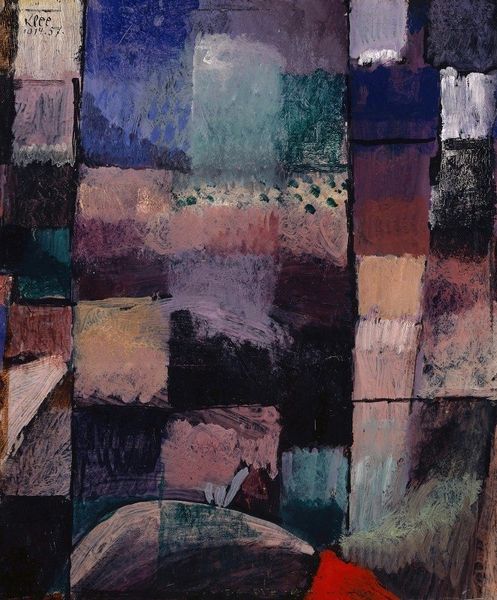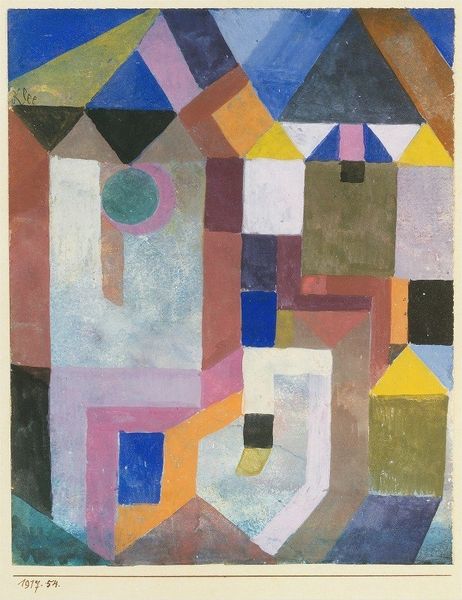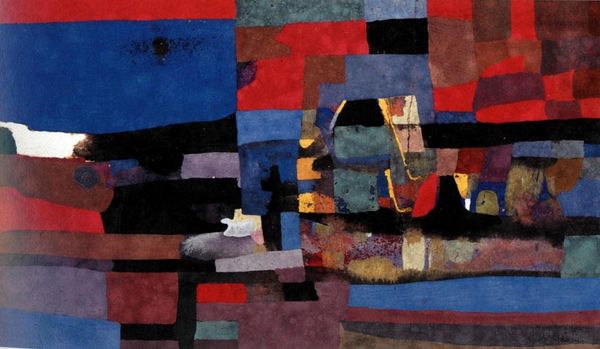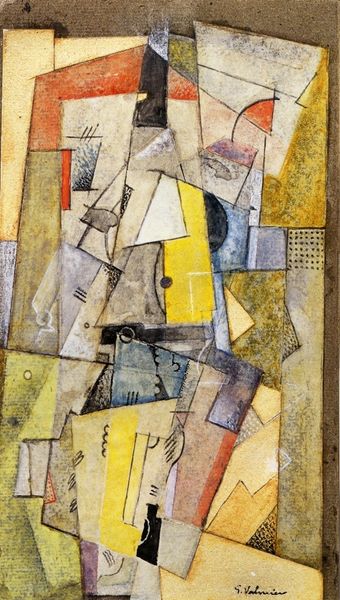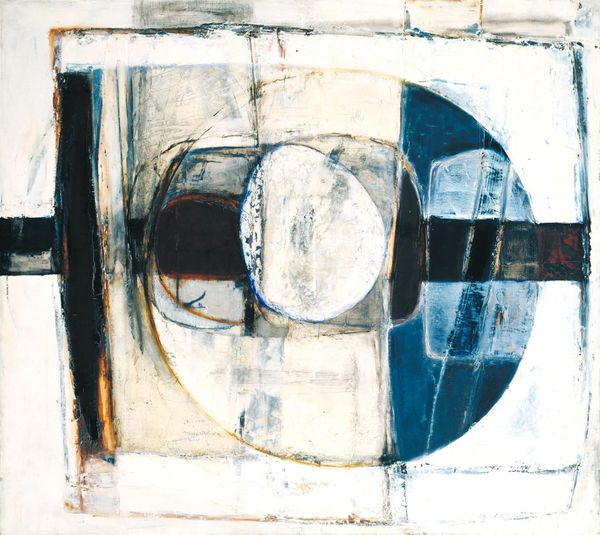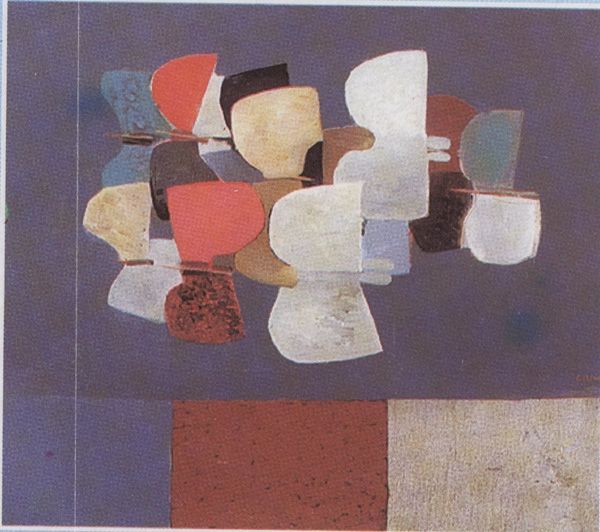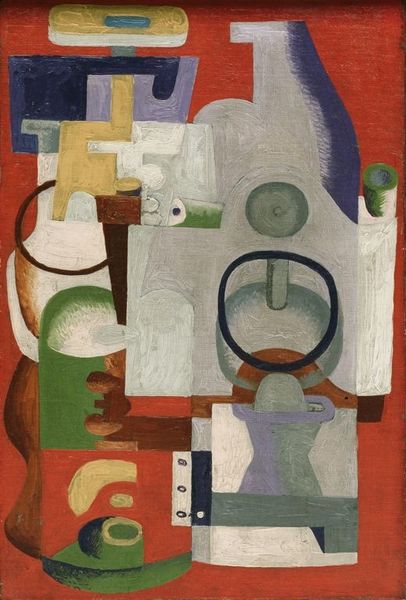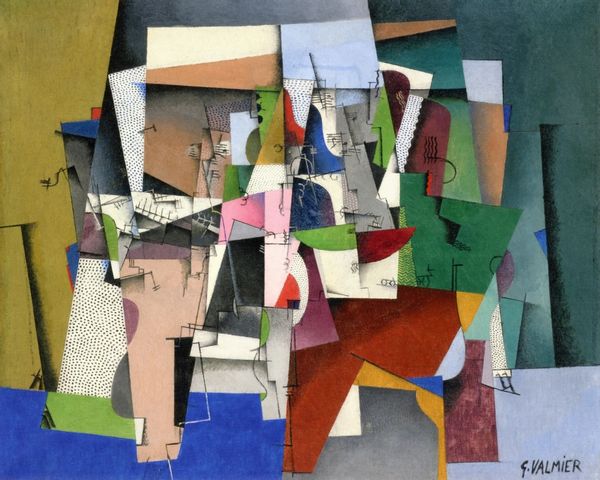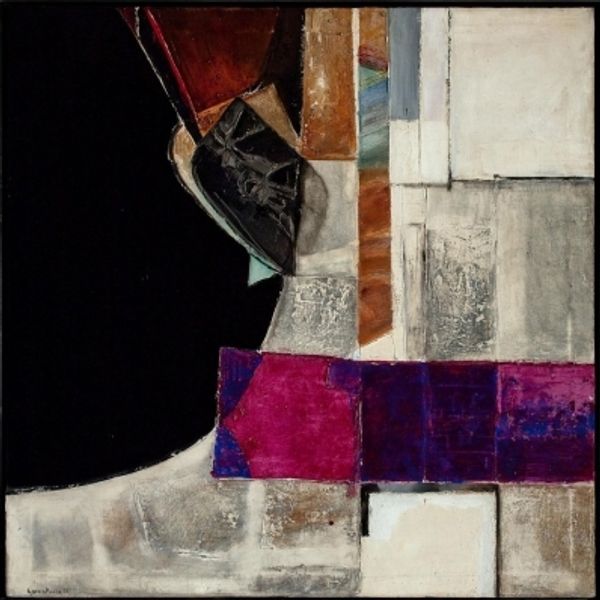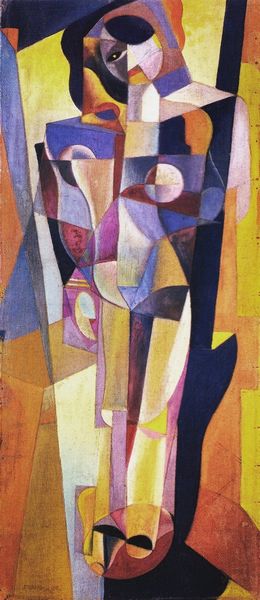
Copyright: Public Domain: Artvee
Editor: This is Paul Klee’s “White Easter II” from 1924. It appears to be a mixed-media piece with lots of geometric shapes, sort of balancing abstraction with the suggestion of architecture. What can you tell us about this work? Curator: Well, if we think materially, the layering of watercolor, oil, and mixed media on paper isn’t accidental. Klee wasn’t just "painting," he was building up textures, forcing a dialogue between the high art associations of oil and the more 'craft'-oriented feel of watercolor and paper. It challenges those hierarchical distinctions, doesn’t it? What are these materials communicating beyond just color or form? Editor: I see what you mean about the layering. It gives the piece a kind of tactile quality despite being relatively small. The grid, too – it feels like he's referencing weaving or textile production almost as much as painting. Do you think that was intentional? Curator: Absolutely. Klee was teaching at the Bauhaus, remember? They were obsessed with bridging the gap between art and craft. Think about the labor involved, the repetitive process of applying each layer. Is it about personal expression, or is Klee commenting on industrial production and the handmade in a rapidly changing world? Even the title "Easter," typically associated with elaborate traditions, now is a very stylized reflection, mediated by artistic materials and abstraction. Editor: That’s a good point. It does feel like he’s asking us to reconsider those connections – craft, production, art... the historical weight of them. The “White” of the title also comes through stronger given this tension – is this “White” referring to new, abstracted methods or is he reflecting on some industrial standard? Curator: Exactly! Think about the social context of art making – what Klee consumes for its materials is as important as the output of a ‘finished piece.’ Editor: I’m definitely seeing the piece in a new way, looking beyond the formal elements and considering the labor and production embedded in its materiality. Curator: Agreed! Paying closer attention to those tensions help reveal it!
Comments
No comments
Be the first to comment and join the conversation on the ultimate creative platform.
